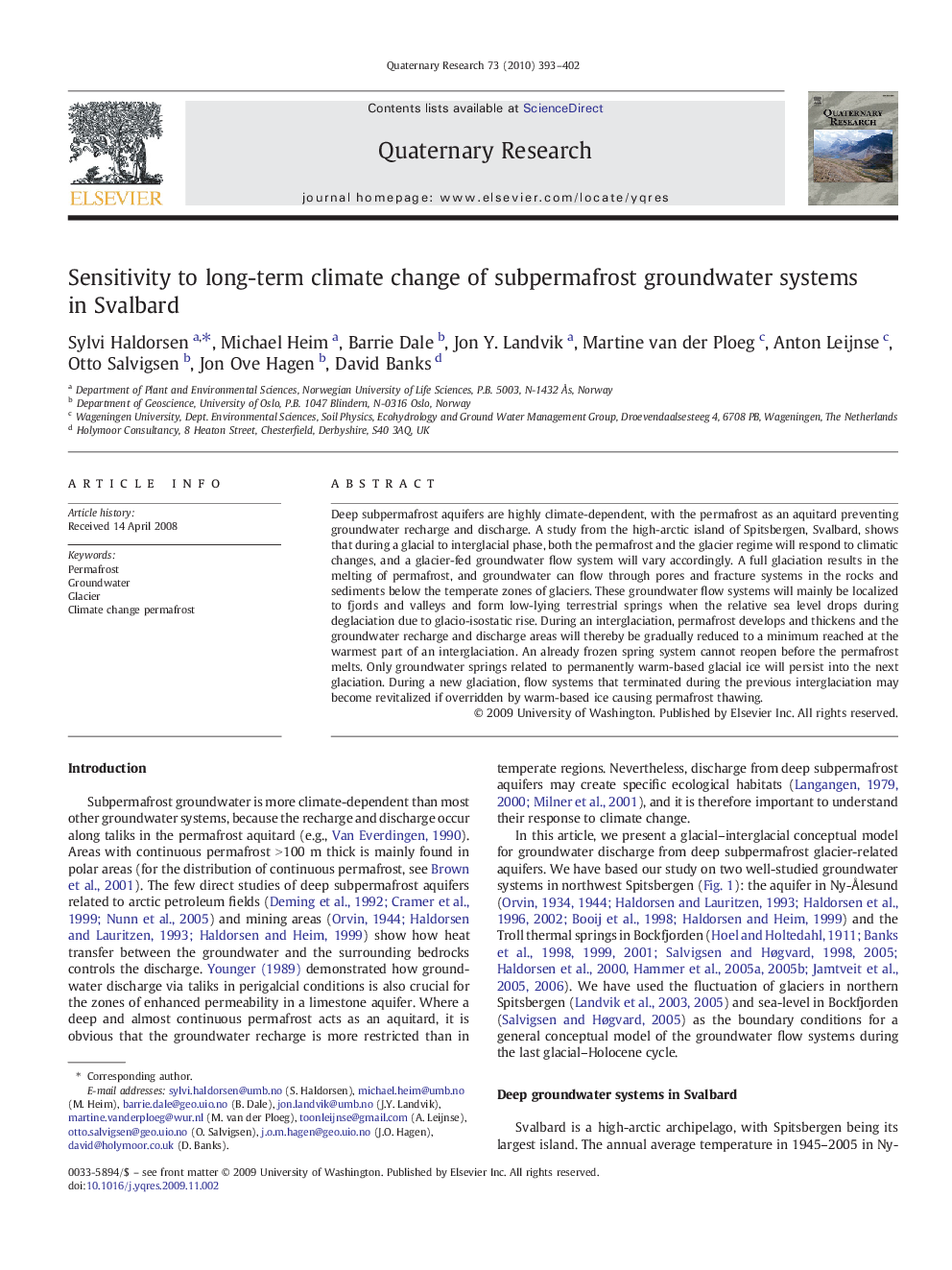| Article ID | Journal | Published Year | Pages | File Type |
|---|---|---|---|---|
| 1045523 | Quaternary Research | 2010 | 10 Pages |
Deep subpermafrost aquifers are highly climate-dependent, with the permafrost as an aquitard preventing groundwater recharge and discharge. A study from the high-arctic island of Spitsbergen, Svalbard, shows that during a glacial to interglacial phase, both the permafrost and the glacier regime will respond to climatic changes, and a glacier-fed groundwater flow system will vary accordingly. A full glaciation results in the melting of permafrost, and groundwater can flow through pores and fracture systems in the rocks and sediments below the temperate zones of glaciers. These groundwater flow systems will mainly be localized to fjords and valleys and form low-lying terrestrial springs when the relative sea level drops during deglaciation due to glacio-isostatic rise. During an interglaciation, permafrost develops and thickens and the groundwater recharge and discharge areas will thereby be gradually reduced to a minimum reached at the warmest part of an interglaciation. An already frozen spring system cannot reopen before the permafrost melts. Only groundwater springs related to permanently warm-based glacial ice will persist into the next glaciation. During a new glaciation, flow systems that terminated during the previous interglaciation may become revitalized if overridden by warm-based ice causing permafrost thawing.
